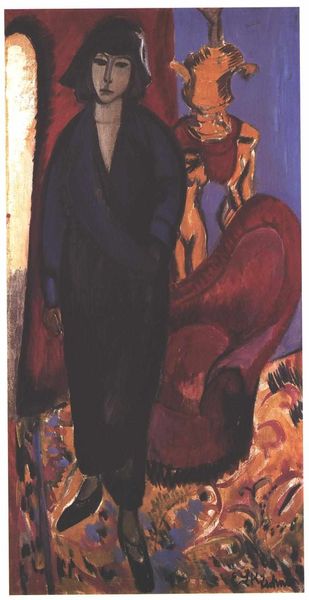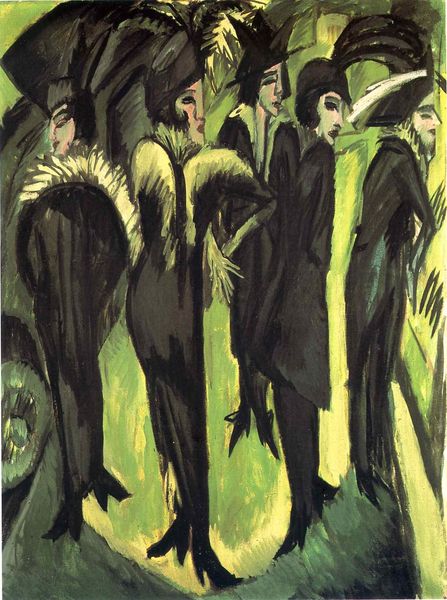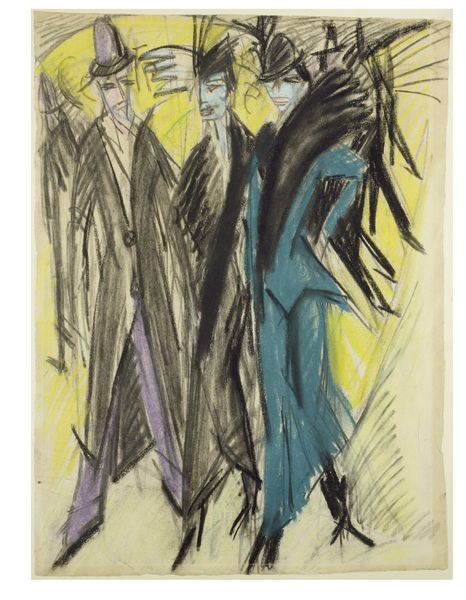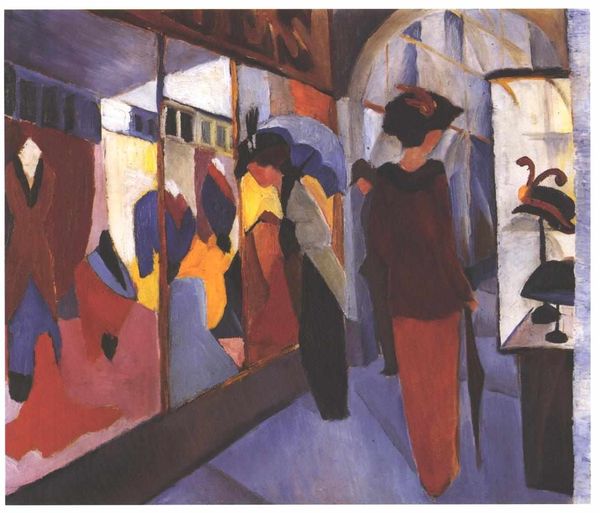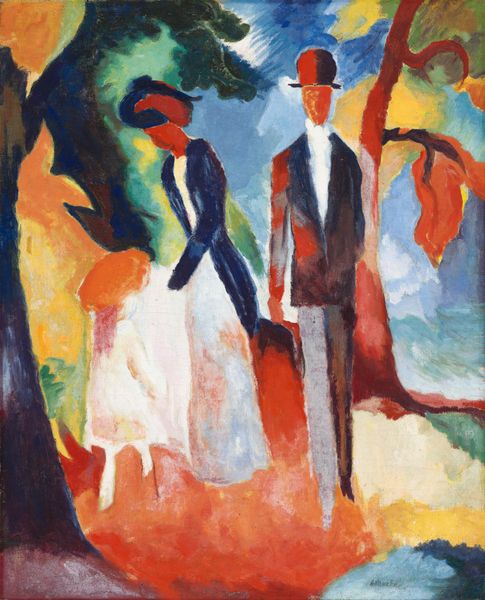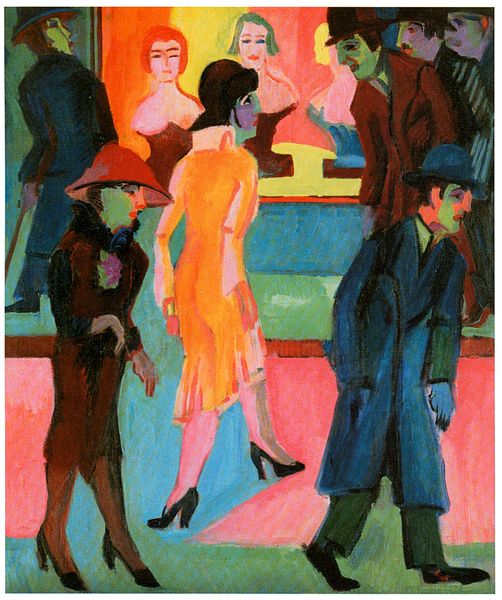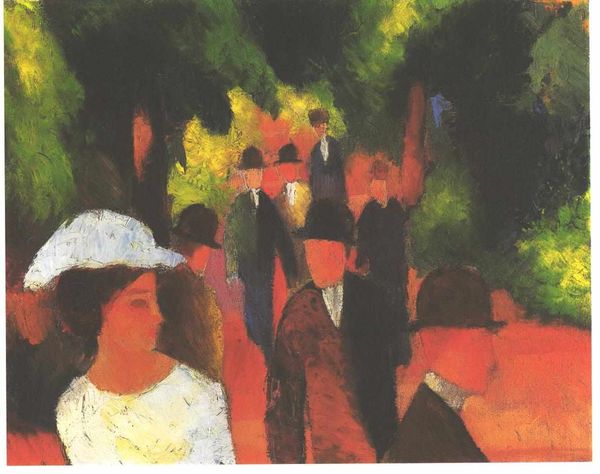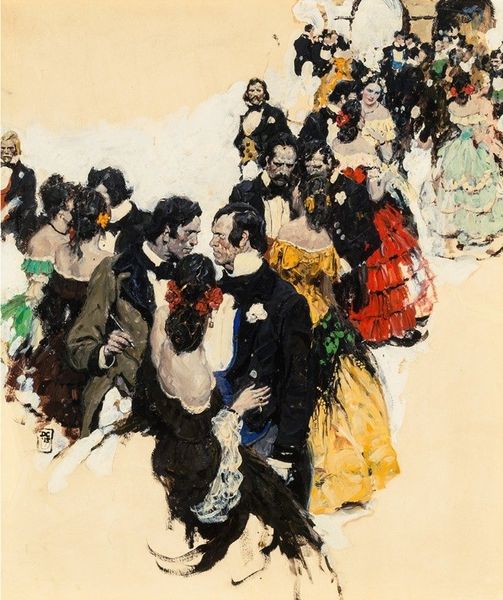
painting, oil-paint
#
portrait
#
narrative-art
#
painting
#
impressionist painting style
#
oil-paint
#
german-expressionism
#
figuration
#
group-portraits
#
expressionism
#
cityscape
#
street
#
modernism
Copyright: Public domain
Curator: Ernst Ludwig Kirchner’s "Street, Berlin," painted in 1913, is a potent example of German Expressionism rendered in oil on canvas. What strikes you initially? Editor: The urgency. It's almost claustrophobic. The sharp angles and the way the figures are pressed together creates a real sense of anxiety and the artist’s agitation in the quickly made and visible marks of the brushstrokes. Curator: Precisely. Notice how Kirchner uses jarring, dissonant color combinations—the pink pavement against the sharp blues and purples. The formal qualities certainly amplify the disquiet. What about the way he renders his subjects? Editor: I find the women especially interesting, so swathed in expensive fur and feathers—the textures are palpable, especially the ruffs. It speaks to a decadent materialism of the time, almost grotesque, wouldn't you agree? These objects clearly communicate the status of their owners and create alienation within the street. Curator: Undeniably. Kirchner isn't just representing these figures; he’s offering a critique. Observe how the faces are mask-like, flattened. It robs them of individuality. This flattening could stem from printmaking. Kirchner worked across many mediums, which is not surprising considering the movement's goals. It emphasizes alienation, dehumanization amid rapid urbanization and its new technologies of alienation, too. Editor: Absolutely. And consider the artistic labor itself: rapid, almost violent application of paint, visible process—reflecting, perhaps, the frenzy of Berlin at the time, alluding also to the exploitation upon which those luxurious materials rest. Who made that fur, who dyed it, how were the feathers harvested? Curator: A very important point. Kirchner’s expressionistic distortion of form and color are powerful aesthetic decisions. There is certainly a conversation to be had with materiality regarding the conditions in which Kirchner chose and wielded it. Editor: Ultimately, I find "Street, Berlin" unsettling, a commentary on modernity and the ways it shapes and perhaps distorts our connections with ourselves and others by exposing or reflecting contemporary conditions of production. Curator: A striking image and conversation that asks the viewer to consider a moment in time, reflected through intentional forms and their attending realities.
Comments
No comments
Be the first to comment and join the conversation on the ultimate creative platform.

